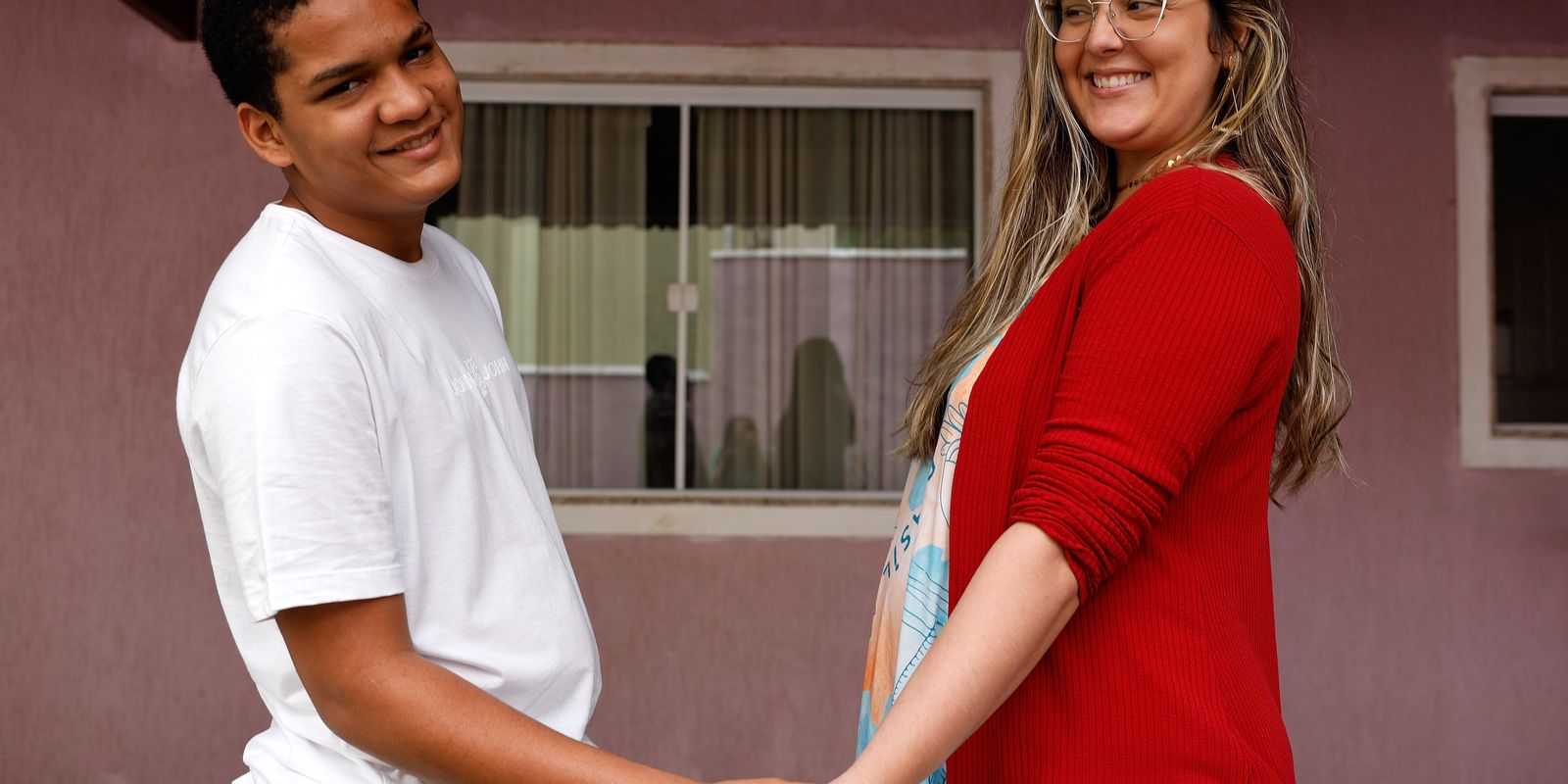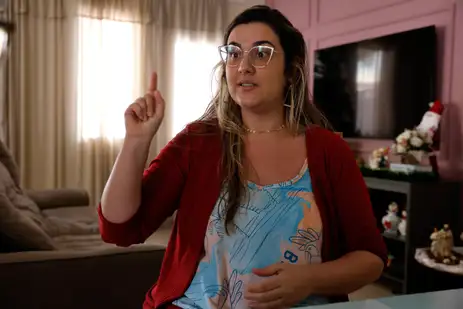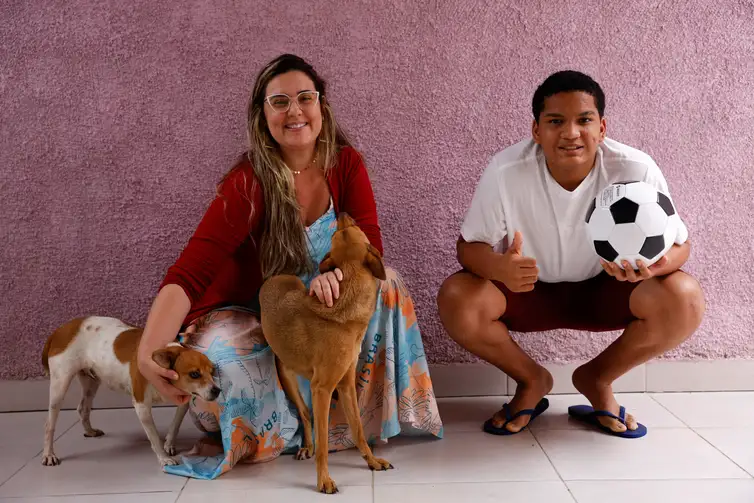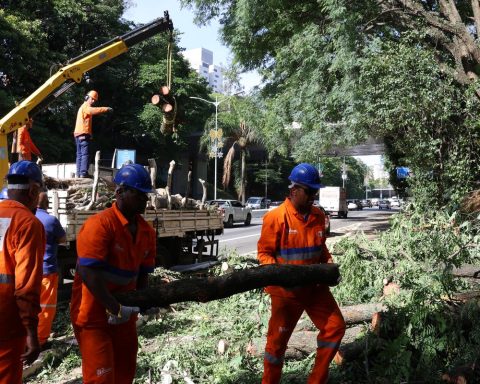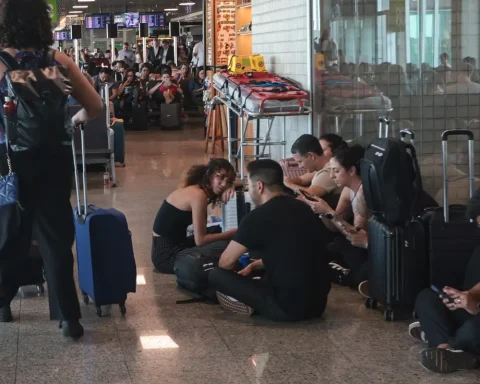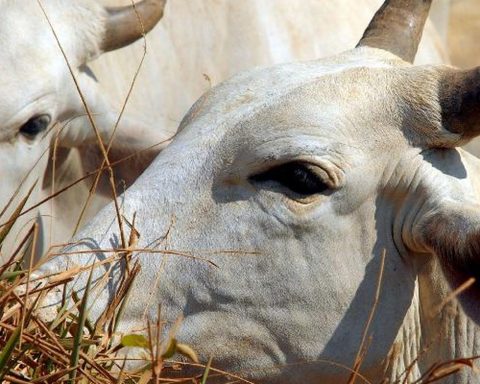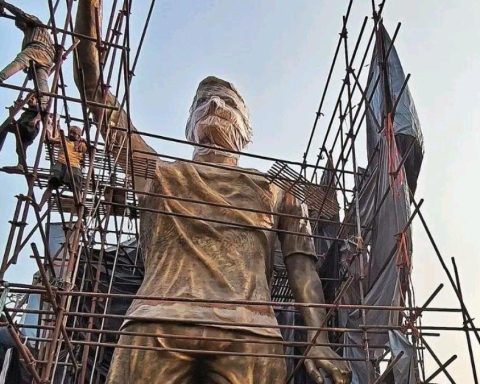On a tree-lined and not very busy street in the Campo Grande neighborhood, in the west zone of Rio de Janeiro, only loud barking can be heard. A shy teenager waits in front of the open gate of house number 4. A woman comes right after and says “my name is Bruna Campos, I’m 35 years old and I’ve been Thalysson’s mother since April, when I met him”, introducing herself to the reporting. Before being adopted, Thalysson Barbosa, 14 years old, was one of more than 5 thousand young people waiting for a family in Brazil, according to data from the National Adoption and Reception System of the National Justice Council (CNJ).
In an interview with Brazil AgencyBruna recalls that she and her husband, Marlon Barbosa, were in the process of qualifying for adoption about a year ago, when they met Thalysson, from Adoption Support Group Adoption Colors (GAA Cores).
“When we joined the group, we didn’t yet have an idea of the profile we wanted, but Cores talks a lot about diversity and presents several possibilities. We then increased our profile and even put it into late adoption”, he explains.
As recommended by the group, the couple started following the adoption profiles published by Busca Ativa, which completely changed their trajectory. The National Active Search is a measure recently adopted by the National Justice Council (CNJ) to facilitate the adoption of children and adolescents who do not have the profile most desired by those registered in the National Adoption and Reception System (SNA). Through it, people and families registered for adoption can find personal information, photos and videos of children and adolescents who face difficulties in being adopted. According to the CNJ, this year, 307 of the 3,409 adoptions were through active search, which represents around 9% of all adoptions carried out during this period.
“One day, they put Thalysson’s photo in the group, so I showed it to my husband and we decided to go and meet him. We spoke to the psychologist at the 1st Court [da Infância, da Juventude e do Idoso] to find out a little about his story and, on April 16th of this year, we went to visit him at Abrigo Dom Hélder Câmara, in the city center”, says Bruna Campos.
The rapprochement process began soon after. For a month, Bruna and Marlon went once a week, on Saturdays, to the shelter in the Estácio neighborhood to visit Thalysson. Afterwards, they were allowed to take him for a walk, without being able to take him home. Over time, Thalysson was allowed to spend the weekend with the couple, returning on Sundays. In July, school holidays came and he was able to spend a week with the couple, increasing their bond. After another month, the court hearing and Thalysson’s custody came.
“We have custody, but his certificate does not yet include our names”, explains Bruna. “I can’t imagine my family being any different from the configuration it is in now. I was very romanticized, like everyone else, that when I met him it would be love at first sight, but it wasn’t like that”, he adds.
“When you start to really live together, because love is coexistence, that insane love really comes. It’s an absurd, disproportionate love, to the point that I can’t describe it. Today, my family is perfect. I can’t remember what it was like without him here”, says Bruna, four months pregnant. “She [a família] It is complete and I was only able to realize this now, when my son arrived. He was really missing here all the time.”
Profile
According to Lygia Santa Maria Ayres, PhD in Social Psychology from the State University of Rio de Janeiro (Uerj) and professor in the Department of Psychology at the Federal Fluminense University (UFF), the main profile of children entered into the adoption system are black boys. , children of single mothers and over 5 years of age.
“The children and young people up for adoption come from vulnerable families without support from public policies. They are part of a layer of the population that, unfortunately, is outside the system”, he observes.
“Normally, it is single mothers who end up giving their children to shelters as a form of protection.”
In the teacher’s assessment, due to the lack of infrastructure and emotional and socioeconomic conditions, these mothers give up their children in order to guarantee their livelihood.
CNJ
You CNJ data confirm the teacher’s description. Of the 5,049 young people linked for adoption, 2,322 (46%) were female and 2,725 (54%) were male. The majority (69.5%) are black, with 2,631 (52.1%) identified as mixed race and 877 (17.4%) as black.
In Active Search, of the 1,471 children and adolescents, 688 (46.8%) were female and 783 (53.2%) were male. As in the general data, a large proportion of young people in Active Search are black (72.1%), with 770 identified as mixed race (52.3%) and 291 as black (19.8%).
Regarding age, 2,005 are up to 10 years old, while 3,039 are 10 or more. In the general picture, the largest age groups are between 14 years old and 16 years old (864), over 16 years old (818) and between 12 years old and 14 years old (767). In Active Search, there are 244 children aged up to 10 and 1,226 aged 10 or over. The same groups are repeated as age groups that bring together the largest number of young people suitable for adoption, with 387 between 14 years old and 16 years old, 366 over 16 years old and 302 between 12 years old and 14 years old.
The presence of siblings can be a factor that makes adoption difficult. In general, 3,085 children and adolescents in the adoption system have at least one sibling, while in Active Search there are 894. Also in Active Search, children who have a disability are more significant, be it intellectual (26%), physical and intellectual (7.8%) or just physics (1.2%). In total, 725 (14.4%) of young people eligible for adoption in the country have intellectual disabilities, 221 (4.4%) physical and intellectual and 76 (1.5%) only physical.
Suitors
In the country, there are 35,631 adoption candidates. Couples (88.1%) are the majority, corresponding to 31,390 thousand. The majority (68.8%) do not determine the gender of the child they wish to adopt, although 24.1% are interested in adopting a girl, and 7.1%, a boy. The same happens with the accepted ethnicity: 21,016 have no preference, while 12,349 want to adopt a white child. Other ethnicities are less mentioned: brown (10,922), yellow (4,046), black (3,260) and indigenous (2,726).
Regarding age, the majority are interested in a child up to 8 years old, with 11,344 looking for children between 2 years old and 4 years old; 11,055 between 4 years and 6 years; 6,227 aged up to 2 years and 4,884 aged between 6 and 8 years. In relation to quantity, the percentage of suitors decreases as the number of desired children increases: 61.7% agree to adopt just one child, 35.9% two and 2.4% two or more. The vast majority exclude children who have some type of disability and 94.9% of adopters, or 33.81 thousand, are looking for a young person without any type of disability.
Challenges
For doctor in Social Psychology Lygia Santa Maria Ayres, in addition to specific characteristics, many suitors look for children with physical traits similar to their own, or babies under 2 years of age.
“The idealized child is generally a child close to their genetic and social condition. Generally, mothers, fathers or couples, whether homosexual or heterosexual, want a child who looks like them”, he observes.
Children who do not meet this profile end up spending more time in shelters.
The psychologist notes the greater demand for girls, despite the significant number of boys: “There is this fantasy that raising girls is easier, that girls are more affectionate, more familiar. This ends up being the prioritized group of children, up to two years old and preferably white or mixed race”, he explains.
Given the preference of adopters, Ayres highlights that the main challenge faced by young people in the adoption system is dealing with the feeling of abandonment. “They feel like they did something wrong and that they are being punished for it. They don’t really understand the situation, and every time a child is adopted and they stay, the feeling that they are not wanted increases.”
At 18 years of age, when they reach adulthood, these young people are disconnected from the foster care system and forced to face life. “They are poorly educated teenagers, without great prospects and sometimes their families have distanced themselves to such an extent that they can no longer integrate. In some cases, you can still contact a family member, but it is very difficult,” he said.
“These young people are disconnected from the system because they have reached the age of majority and the State believes that it has already fulfilled its role of assistance”, assesses the teacher.
The professor argues that guaranteeing public policies for access to daycare centers and jobs, allowing mothers to raise their children, is a way to avoid handing them over to shelters.
* Intern under the supervision of Vinícius Lisboa
